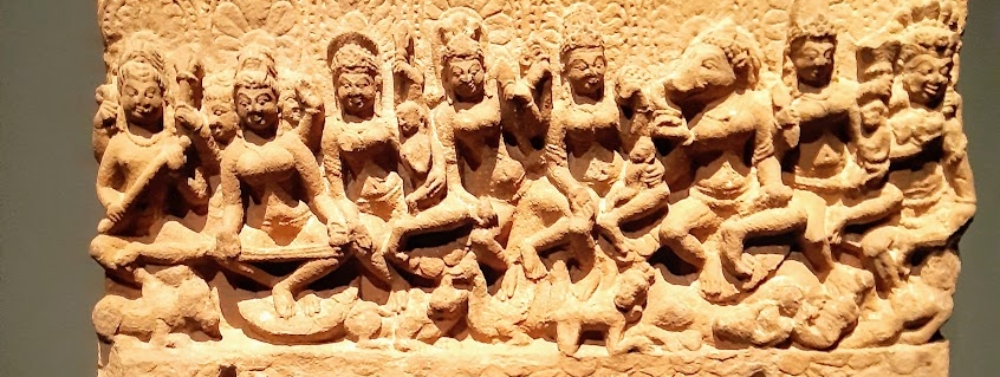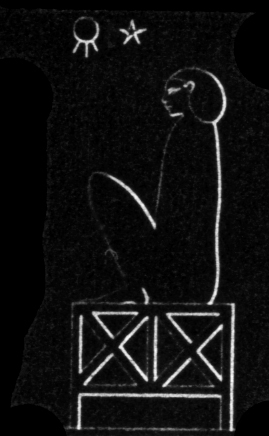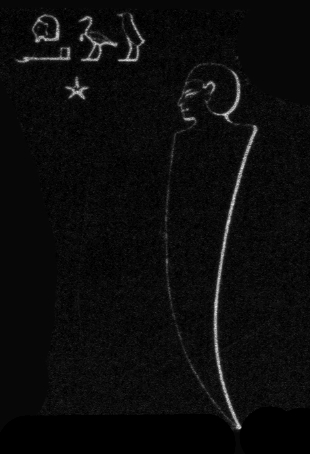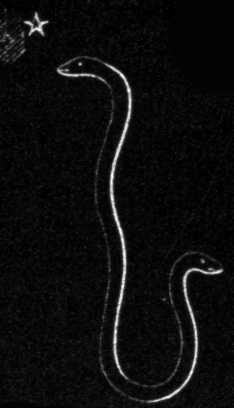As is well known to those who follow my reconstructed Egyptian daemonic or demonic calendar, every 30 day lunar period is dominated by three entities, one for each ten day period or trimester, also known as a decan, from Latin for 10. Here they are, as depicted on the wall of the temple of Isis at Philae:
The new moon began on 23rd February with the left most image known simply as Akhw, which I have translated elsewhere as spirit entity, very like the later idea of the Djinn, which in many ways is a belief system in continuity with that of Pharaonic Egypt. The astrological month of Pisces also, as it happens, begins more or less now, and these seem very appropriate spirits for the Pisces type.
Now of course, I have argued that all of the 36 decanal demons are like the class of demonic things known in old Egypt as the Akhw, but this is not to say this term is here just a generic thing. There is something very special about this demon. Rather than being generic we could say it is the paradigm for the whole array of night spirits, In the ancient almanac from which some of these details are gleaned, a great deal of otherwise lost folklore and mythology is recorded, often in passing. In several places in the long text, special rites are prescribed for the Akhw, who maybe otherwise become troublesome. No surprise then that the group of three have a particularly demonic aspect, where as other images could simple be those of the common gods of Egypt.
Interesting too that whereas many other images of the demons have been mutilated in later times, these three survive intact. Here’s an example of one of the other images, although with the typical mutilation of the effective organs, the face & hands. The context of these mutilations is a subject in its own right and very interesting magick too: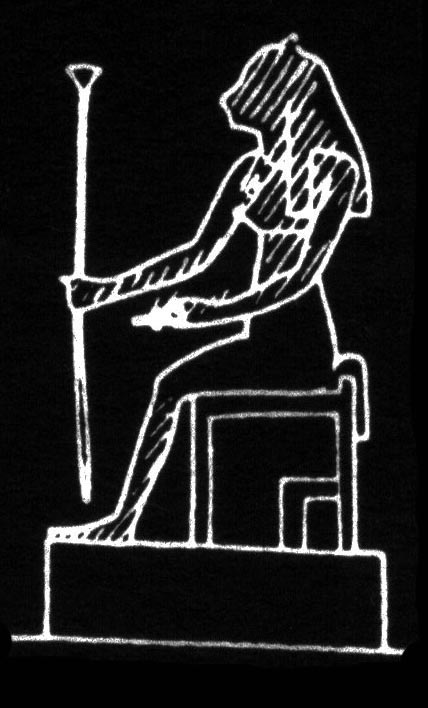
The middlemost image shown earlier is very strange, quite monstrous really; a human headed entity, wearing the archaic skull cap similar to that worn by the god Ptah, but no arms! This absence of arms is intentional, nothing is left to chance in Egyptian art, although the meaning may be lost on us, but something like, he has no hands to take hold of you. His entire body tapers off into that of a crocodile. His or her name translated as “one who comes before or heralds the two souls (the Ba)” Now, as these entities are also groups of stars in the so-called decanal belt – he could be the herald in the sense of the group of stars that rises before the third and final demon, the one who rules the dark nights of the month, and the mysterious days before the next new moon when gods such as Horus arise from the body of their father Osiris. No surprise then that the entity that we are guided towards, is the strangest of the entire strange series of three. The image shows a snake with two heads, one at each end of his body. Monstrous but useful if you want to look in two directions, and in this case two levels, perhaps upper and lower. But troublesome if the two souls decide to pull in different directions. Perhaps they are meant to represent two snakes mating, their sensuous bodies molded together. Ancient mystery of the body is encoded here, one that emerged later in the Hindu tradition known as Tantra. Two souls are fine as long as they move in coordination and in the same direction. We tend to think that being single minded is the best way to get things done but perhaps here we can detect an equally old and valuable idea, that two heads are better than one.
The decans are discussed in greater detail in my books Supernatural Assault in Ancient Egypt and Phi-Neter: Power of the Egyptian gods. I’m currently working on a combined volume, devoted to the Egyptian Demonic Calendar. Look out for all these titles wherever good books are sold, but certainly on Amazon.
Oh, and my name is Mogg Morgan
